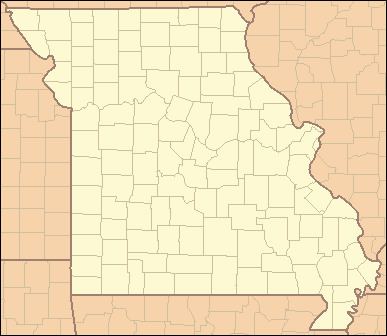- State ownership 1946 Built by WPA Area 15.92 km² | Built 1936 (1936) Architectural style Rustic Phone +1 660-563-2463 | |
 | ||
- Visitor Center 873 SE 10thKnob Noster, Mo. Address 873 SE 10, Knob Noster, MO 65336, USA Similar KSZL, University of Central Missouri, Action Realty Co, Re/Max Complete, Warrensb Park & Recreation | ||
Knob noster state park missouri
Knob Noster State Park is a state-operated, public recreation area covering 3,934 acres (1,592 ha) in Johnson County, Missouri, in the United States. The state park bears the name of the nearby town of Knob Noster, which itself is named for one of two small hills or "knobs" that rise up in an otherwise flat section of Missouri. Noster is a Latin adjective meaning "our"—therefore, Knob Noster translates as "our hill." A local Indian belief stated that the hills were "raised up as monuments to slain warriors." The park offers year-round camping, hiking, and fishing and is managed by the Missouri Department of Natural Resources.
Contents
- Knob noster state park missouri
- HistoryEdit
- National Register of Historic PlacesEdit
- EcologyEdit
- GeologyEdit
- RecreationEdit
- References
HistoryEdit
The park was called the Montserrat National Recreational Demonstration Area when it was created in the 1930s as part of a nationwide effort by the National Park Service to show how land that had been cleared for lumbering, mining or farming could be restored and reclaimed for public recreational purposes. The park was constructed by the Civilian Conservation Corps and the Works Progress Administration. The men of the CCC and WPA built roads, bridges, camping areas, picnic areas, and park service buildings. The park was transferred to the state of Missouri in 1946 and renamed for the city of Knob Noster. In 1985, several demonstration area structures dating from the 1930s were added to the National Register of Historic Places
National Register of Historic PlacesEdit
EcologyEdit
The Knob Noster area was described in 1861 during the American Civil War by Confederate soldier, Ephraim McDowell Anderson, as an area of "beautiful prairies, dotted with clumps of trees." The park lies in the Osage Plains, a transition zone between prairie and forest. Tall wild grasses and wild flowers grow among scattered trees making habitat similar to a savanna. Since settlement, the savanna has been overgrown with trees as the land is transitioning to a forest. Efforts are underway to restore some parts of the park to its original condition through controlled burning.
Clearfork Creek is a slow flowing meandering creek that passes through the park. It provides water for a corridor of trees along its banks. The trees growing along the banks and in other parts of the park include pawpaw, various species of hickory and oak, hackberry and redbud. The creek, prairie and woods provide a habitat for numerous birds and mammals including great blue herons, pileated woodpeckers, wild turkeys, white-tailed deer, fox, opossum, raccoons, screech owls and eastern bluebirds.
A 4-acre (1.6 ha) section of the park has been specially designated as a protected natural area. Pin Oak Slough Natural Area is in a former oxbow slough of Clearfork Creek. The area is a wet-mesic forest and shrub swamp. Water pools during spring in depressions making vernal pools. Trees growing in the Pin Oak Natural Area include pin oak, swamp white oak and bur oak as well as silver maple. The rare pale green orchid can also be found in the natural area.
GeologyEdit
Knob Noster State Park and the Osage Plains are underlain by soft shales with sandstones and limestones of Mississippian to Pennsylvanian age. Some of the rocks prevalent in the Osage Plains are Mississippian limestone, limestone shale, Ordovician dolomite, and coal. There are also clay and shale within the Pennsylvanian bedrock.
RecreationEdit
Knob Knoster State Park is open for year-round recreation. Two lakes, Buteo and Clearfork, and Clearfork Creek are open to fishing. The most common game fish are channel catfish, crappie, bass and bluegill. Small boats and electric trolling motors are permitted on the lakes. Several picnic areas are spread throughout the park on the shores of the various lakes. Three picnic pavilions are available. Five different types of camping areas are available at Knob Noster State Park. There are basic campsites with a fire ring and pad, electric campsites are similar to the basic, only with electric hook-ups, equestrian campsites have facilities for horses and the special-use and group camping areas are provided.
